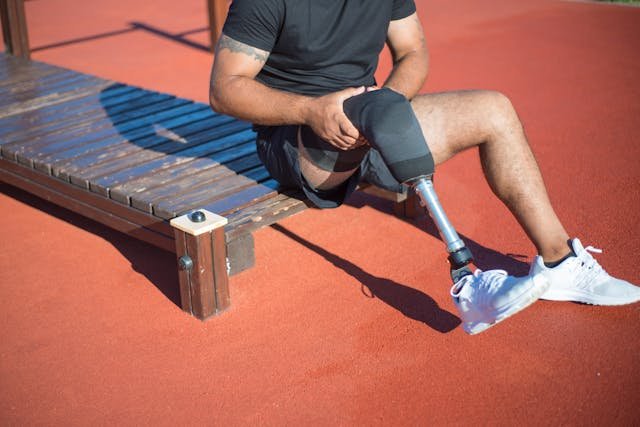Children grow and change quickly, and so do their needs when it comes to prosthetic limbs. A prosthetic that once fit perfectly may become uncomfortable, less functional, or even limit their ability to move freely. As a parent, recognizing when your child needs a prosthetic limb upgrade is essential to ensuring their comfort, confidence, and independence.
Upgrading a prosthetic limb is not just about replacing an old device; it’s about making sure your child has the best possible support to match their growth, lifestyle, and activities. In this guide, we will explore the key signs that indicate when it’s time for an upgrade, how to evaluate your child’s needs, and what steps to take next.
Let’s get started.
Growth-Related Changes That Affect the Fit
As children grow, their limbs change in size and shape. A prosthetic that once fit well may start feeling tight, leading to discomfort and difficulty in wearing it for long periods. If your child complains of pinching, pressure, or a feeling that the limb is too tight, it may be a sign that their prosthetic needs resizing or replacement.
The prosthetic feels tight or uncomfortable
You may also notice red marks or irritation on the skin where the prosthetic attaches. While minor marks are normal, consistent redness, swelling, or skin breakdown indicates that the fit is no longer suitable. A prosthetic that is too small can also cause pain in other parts of the body as your child may unknowingly adjust their posture or gait to compensate.
Regular checkups with a prosthetist can help monitor these changes and ensure that your child’s prosthetic is adjusted to fit properly. Waiting too long to upgrade could lead to unnecessary discomfort and restricted movement.
Your child has outgrown their socket
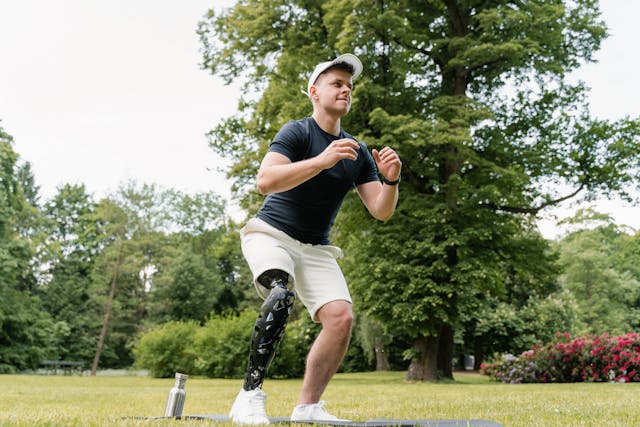
The socket is the part of the prosthetic that connects to your child’s residual limb. As they grow, their limb may become too large for the socket, making it difficult to wear the prosthetic comfortably. A socket that is too small can cause excessive pressure on certain areas, leading to pain or even skin damage.
If your child’s limb no longer fits into the socket easily or if they complain of it feeling too tight, it’s a clear sign that an upgrade is needed. Some sockets can be adjusted, but in many cases, a full replacement is the best solution to ensure comfort and function.
A prosthetist can assess whether a new socket is required or if modifications can be made to improve the fit. Ignoring socket issues can result in improper alignment and reduced mobility.
The prosthetic no longer supports your child’s height and posture
When a child grows taller, their overall balance and movement patterns change. A prosthetic limb that once matched their height and posture may no longer align properly with their body, leading to discomfort, poor posture, and difficulty walking or running.
If your child starts leaning to one side, struggles to maintain a natural gait, or complains of back or hip pain, it may be due to a prosthetic that no longer supports their height. Upgrading to a properly sized prosthetic ensures that their posture remains correct and their body is not under unnecessary strain.
Regular height checks and monitoring your child’s walking pattern can help you identify these issues early. A well-fitted prosthetic should always support natural posture and balance.
Signs of Wear and Tear in the Prosthetic
Prosthetic limbs are designed to be durable, but they go through daily wear and tear, especially for active children. Over time, materials can weaken, leading to cracks, loose parts, or overall deterioration. If you notice any visible damage, it’s a clear sign that an upgrade or repair is needed.
Visible cracks, damage, or loose parts
Loose joints or worn-out connectors can affect the prosthetic’s stability, increasing the risk of falls or injuries. Even minor cracks can grow over time, leading to breakage at unexpected moments. Checking the prosthetic regularly and consulting a prosthetist when damage is detected can prevent more serious problems from developing.
A prosthetic should always feel sturdy and secure. If it starts to feel unstable, wobbly, or unreliable, it’s time to consider an upgrade to ensure your child’s safety and mobility.
The prosthetic no longer moves smoothly
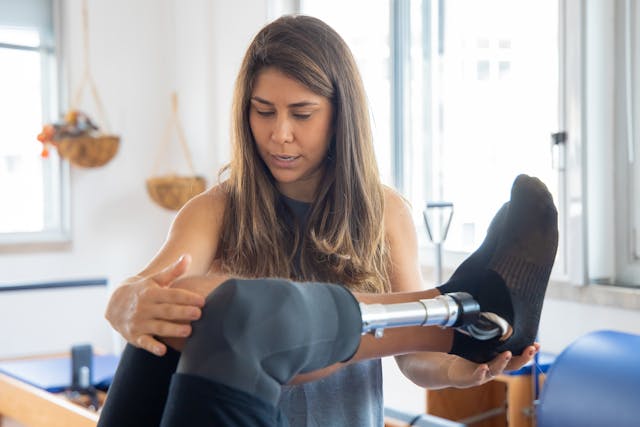
A well-functioning prosthetic should allow natural movement with minimal resistance. If your child’s prosthetic limb feels stiff, does not respond smoothly, or has difficulty bending at the joints, it may be due to worn-out components or outdated technology.
For children using myoelectric or bionic prosthetics, a decline in response time or reduced grip strength may indicate sensor or battery issues. If repairs do not resolve the problem, upgrading to a newer model with improved responsiveness can make daily activities much easier.
A prosthetic that moves properly is essential for maintaining comfort and preventing strain on other parts of the body. If movement becomes difficult or feels unnatural, it’s time to explore an upgrade.
Your child is experiencing frequent breakdowns and repairs
If your child’s prosthetic limb requires frequent repairs or adjustments, it may be a sign that it has reached the end of its lifespan. While small fixes are normal, repeated breakdowns indicate that the prosthetic is no longer reliable.
Constant repairs can also be expensive and time-consuming. Instead of repeatedly fixing an outdated prosthetic, investing in a new and improved model may provide better long-term value. Newer designs are often more durable and require less maintenance, ensuring that your child can focus on being active without worry.
A prosthetist can assess whether repairs are still a viable option or if upgrading to a new prosthetic would be the best solution. Ensuring your child has a reliable limb is key to maintaining their confidence and independence.
Changes in Activity Level and Lifestyle
Children’s activity levels change over time, and their prosthetic limb should match their lifestyle. A prosthetic that worked well for everyday walking may not be suitable if your child has started engaging in more physical activities, such as running, cycling, or sports.
Your child has become more active and needs better performance

If your child is struggling to keep up with their peers, complains of discomfort during movement, or frequently removes their prosthetic due to limitations, they may need an upgrade. Specialized sports prosthetics offer better shock absorption, flexibility, and durability, allowing children to participate in activities without restrictions.
Discussing your child’s activity level with a prosthetist can help determine if a new prosthetic design would better support their physical needs. Keeping up with an active lifestyle is essential for overall well-being and confidence.
The prosthetic no longer matches their functional needs
As children grow, their daily tasks and responsibilities evolve. A child who once needed a basic prosthetic for mobility may now require a more advanced design for activities like schoolwork, playing musical instruments, or engaging in hobbies.
If your child struggles with daily tasks or avoids activities they once enjoyed, it could be a sign that their prosthetic no longer meets their functional needs. Upgrading to a prosthetic with better grip control, improved dexterity, or enhanced stability can make everyday life easier and more enjoyable.
Consulting with a prosthetist about your child’s evolving needs ensures they have the best prosthetic to support their lifestyle. The right limb should always enhance their ability to live independently and pursue their interests.
Your child expresses frustration or dissatisfaction with their prosthetic
Children are often the best judges of their own needs. If your child frequently complains about their prosthetic being uncomfortable, limiting, or hard to use, it’s important to take their concerns seriously.
Frustration with a prosthetic can lead to reduced confidence, social withdrawal, and decreased participation in activities. A limb that no longer feels right can affect not only mobility but also self-esteem. Listening to your child and involving them in the decision-making process helps ensure they receive a prosthetic that makes them feel comfortable and capable.
Upgrading a prosthetic is about more than just functionality—it’s about ensuring that your child feels confident and empowered in their daily life.
Preparing for a Prosthetic Limb Upgrade
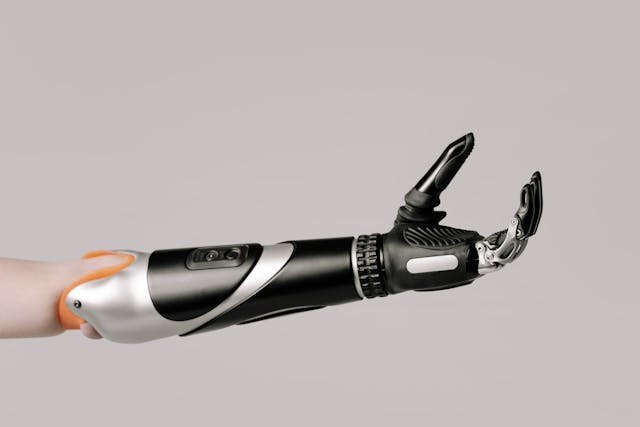
The first step in upgrading a prosthetic limb is scheduling a comprehensive evaluation with a prosthetist. This specialist will assess how well the current prosthetic fits, how your child moves with it, and whether it meets their daily needs.
Consulting a Prosthetist for an Evaluation
During this visit, the prosthetist will check for pressure points, misalignment, and reduced function. They may also ask about your child’s activity level, any discomfort they are experiencing, and their personal preferences. These details help determine whether adjustments can be made or if a complete upgrade is necessary.
Parents should bring any medical records, past prosthetic history, and details about their child’s activities to this consultation. The more information provided, the easier it will be to find the perfect solution. This appointment is also a great time to ask about new advancements in prosthetic technology that could benefit your child.
Choosing the Right Type of Prosthetic for Your Child’s Needs
Upgrading a prosthetic limb isn’t just about replacing the old one—it’s about finding a better fit for your child’s current lifestyle and future needs. There are several factors to consider when selecting a new prosthetic.
For highly active children, sports prosthetics provide better flexibility, durability, and energy return. If your child needs better fine motor control, myoelectric or bionic prosthetics with advanced sensors may be the best option. Understanding what features are available will help you make an informed decision.
It’s also important to consider adjustability. Some prosthetics come with modular components that can be easily replaced as your child grows, reducing the need for frequent full replacements. Choosing a prosthetic with growth-friendly adjustments can help extend its lifespan.
Understanding Insurance and Financial Aid Options
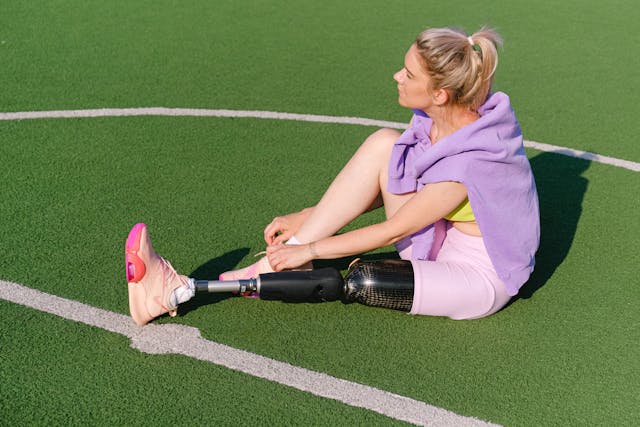
Since pediatric prosthetics need frequent upgrades, parents should review their insurance coverage to understand what costs will be covered. Many insurance plans have limits on the number of replacements allowed within a certain time frame, so it’s crucial to clarify these details.
If insurance does not fully cover the upgrade, families can explore financial aid programs, non-profit grants, and crowdfunding options. Organizations like the ADIP Scheme, Jaipur Foot, and CSR-funded programs offer assistance for children in need of prosthetic care.
Being proactive about financial planning can prevent delays in getting the new prosthetic and ensure your child receives the best possible solution without unnecessary stress.
What to Expect During the Prosthetic Fitting Process
Every child’s body is unique, and so is their prosthetic limb fit. The fitting process ensures that the new prosthetic is comfortable, secure, and functional. This step is crucial for preventing skin irritation, misalignment, and discomfort that can affect mobility.
The Importance of a Custom Fit
During the fitting, the prosthetist will take detailed measurements of your child’s residual limb to create a socket that fits perfectly. They may use 3D scanning technology or traditional casting methods to ensure precision. A proper fit allows for smooth movement without causing pressure points or instability.
If adjustments are needed, this is the time to make them. Children should be encouraged to walk, run, or try different activities during the fitting session to make sure the prosthetic supports their full range of motion.
Testing the New Prosthetic and Making Adjustments
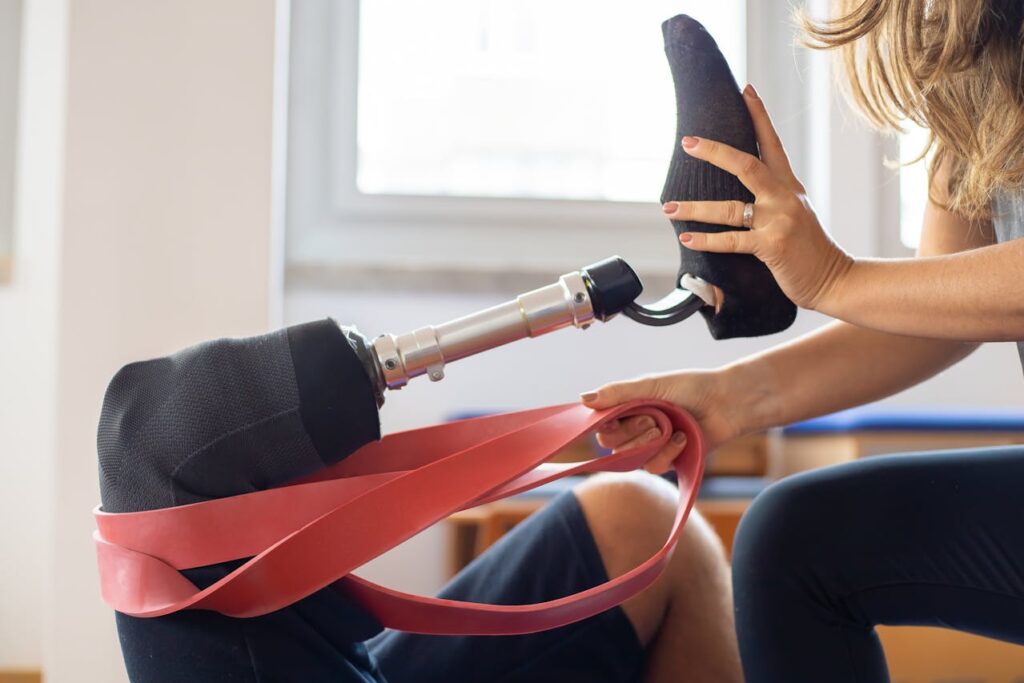
Once the prosthetic is ready, your child will go through a trial phase to test how it feels in real-life situations. They may need to practice simple movements like walking, bending, or gripping objects to ensure the limb responds correctly.
This phase helps identify any necessary adjustments before the final version is delivered. If the prosthetic feels too tight, too loose, or does not move smoothly, modifications can be made to improve comfort and function.
The prosthetist will also teach your child how to properly wear, remove, and maintain the prosthetic. Learning these basics early helps build confidence and ensures long-term success with the new limb.
Helping Your Child Adjust to the New Prosthetic
Transitioning to a new prosthetic limb can take time, even if the fit is perfect. Children may need a few weeks to fully adapt to the new design, especially if it has different features than their previous limb.
Encouraging your child to practice daily activities with the new prosthetic can speed up the adjustment process. Simple tasks like walking around the house, picking up objects, or playing with toys can help them get used to the new limb in a familiar environment.
Parents should also be patient and supportive. If your child experiences frustration or discomfort, reassure them that it’s normal and will improve with practice. Regular check-ins with a prosthetist can address any concerns and ensure a smooth transition.
Maintaining the New Prosthetic for Longevity
A new prosthetic limb is an investment, and proper care and maintenance will keep it in top condition for longer. Parents and children should clean the prosthetic regularly to prevent dirt buildup and skin irritation.
Cleaning and Proper Care to Extend Lifespan
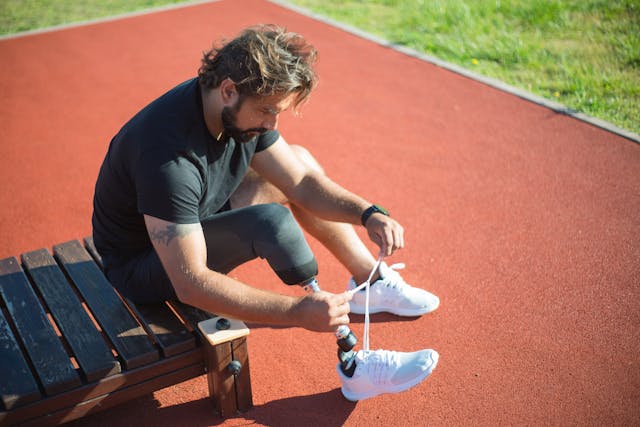
For prosthetic sockets, using a mild soap and water solution helps keep the inner lining fresh and free from bacteria. Mechanical joints and moving parts should be checked periodically to ensure they remain smooth and functional.
Encouraging your child to develop a daily prosthetic care routine will help them take responsibility for maintaining their limb and keep it functioning at its best.
Regular Check-Ups for Adjustments and Repairs
Even after a successful fitting, regular follow-up visits with a prosthetist are necessary. Children’s bodies change rapidly, and even small differences in limb size or posture can affect how the prosthetic fits.
Scheduling routine check-ups every six months ensures that any issues are caught early before they lead to discomfort or reduced functionality. If your child starts experiencing pain, instability, or decreased mobility, visiting a prosthetist sooner rather than later can prevent long-term problems.
Planning for Future Upgrades as Your Child Grows
Since children will continue growing, it’s important to plan ahead for future prosthetic upgrades. Staying informed about new advancements in prosthetic technology can help families choose the best options when the time comes for another replacement.
Some prosthetic providers offer trade-in or upgrade programs, allowing families to transition to a new limb at a reduced cost. Checking with your prosthetist about future growth-friendly prosthetic options can make upgrades easier and more affordable.
Final Thoughts: Supporting Your Child Through Every Prosthetic Upgrade
Upgrading a prosthetic limb is a natural part of a child’s journey, ensuring they always have a device that fits comfortably, supports their activities, and allows them to move freely. Recognizing early signs that an upgrade is needed, working with a prosthetist for the perfect fit, and supporting your child through the transition are all key steps in making the process smooth and stress-free.
At Robobionics, we are committed to helping children receive the best prosthetic solutions for their growing bodies and active lives. If you think your child may need a prosthetic limb upgrade, contact us today. Our team is here to provide expert guidance, high-quality prosthetic options, and the best possible care to help your child move forward with confidence.



